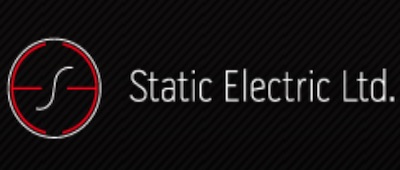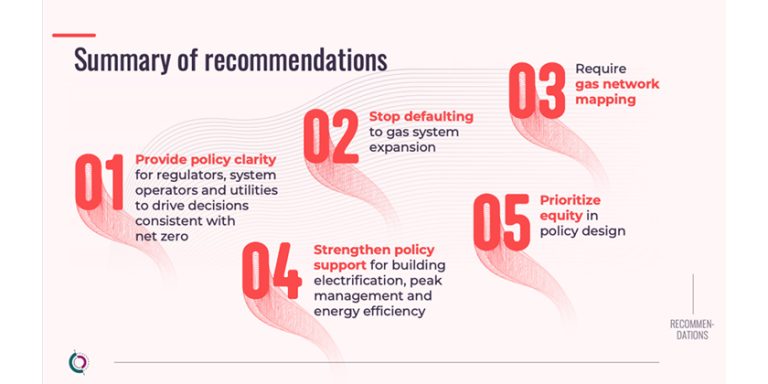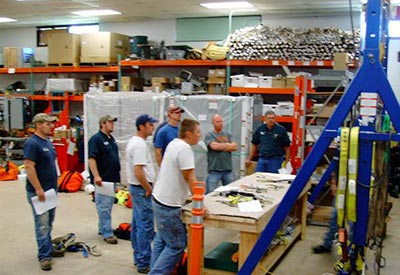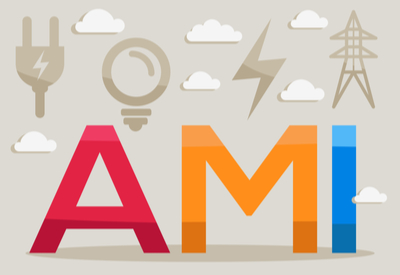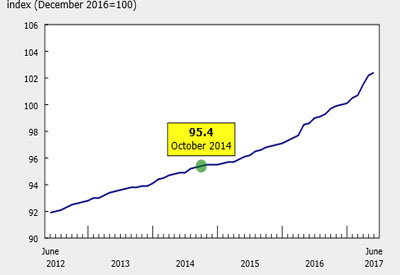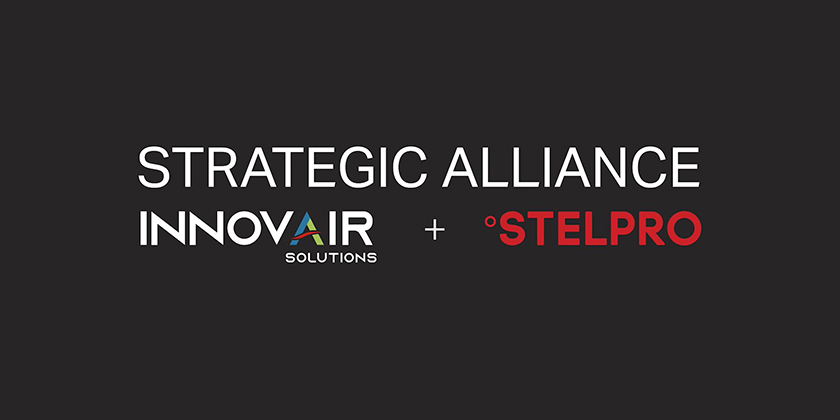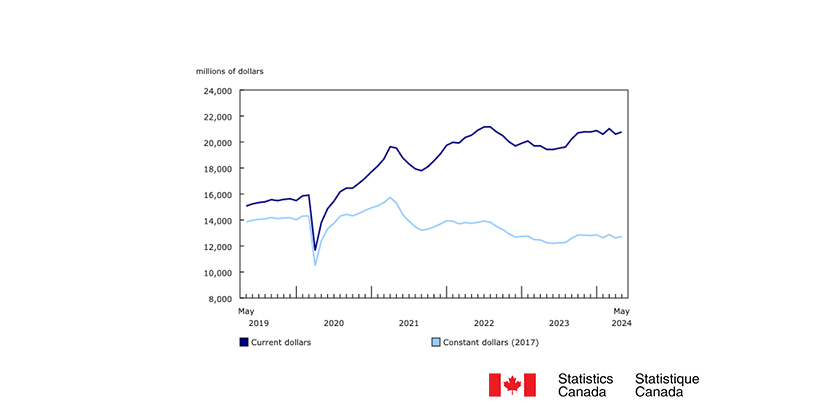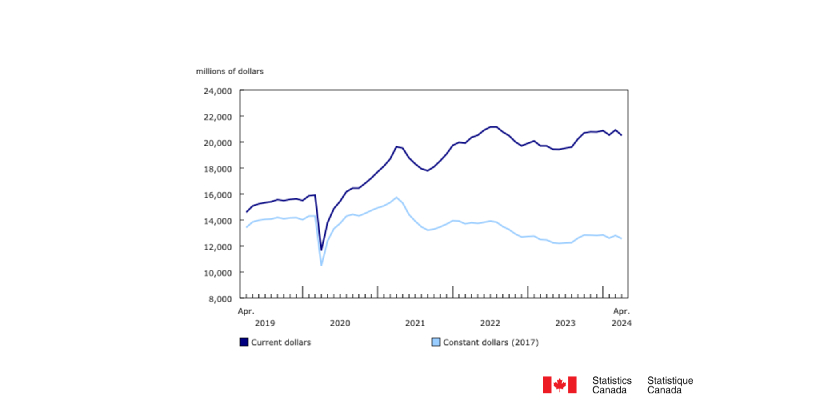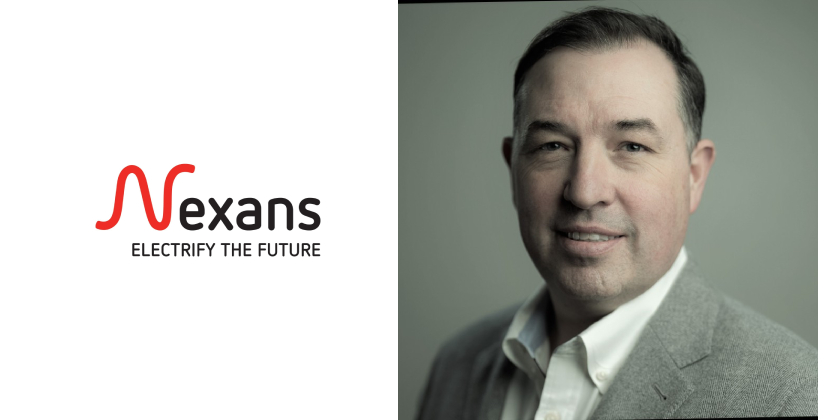An Interview with Aleksandr Brehm of Environmental Design Systems on EV Charging Infrastructure

October 22, 2022
By Elle Bremmer
Le monde de l’électricité en ligne recently had the pleasure of sitting down with Aleksandr Brehm, a senior commissioning authority for global engineering design firm ESD. ESD (Environmental Designs Systems Inc.) is a Chicago-based engineering firm with over 50 years under its belt of structural and environmental engineering, working with clients on sustainability and efficiency strategies, alongside Intelligent Building practices. Working with ESD, Brehm provides technical designs of projects, and he leads and directs the work of commissioning team members of ESD and conceptualizes, executes, and ensures quality throughout the design and construction process to meet clients’ needs and expectations.
Mr. Brehm and I discussed all things related to EV charging and infrastructure, and the future of EVs overall. I first asked what ESD’s role was in the EV marketplace, particularly as it pertains to Brehm. In working for the commissioning team, he does much of the testing for electrical test systems, including developing the test plans, the tests themselves, and then the verification of equipment after installation.
“The majority of the work that I do is for data centres […] and we’ve been experiencing more of them including EV charge stations—getting different electric vehicles for their internal fleets to go in between and for deliveries within their system. We’ve been seeing how that goes, and [how they] run into the different scenarios that they have, how they want to save time and save power by increasing their energy efficiency, as well as bringing in renewables and whatnot to make it so they can offset some of the costs for EVs.”
In regard to power and efficiency, there are only two options: producing more or cutting back. I asked Brehm which of the two was more difficult, in his opinion.
When you are trying to produce more power, land availability can be a limiting factor. He went on to explain that “typically for photovoltaics, because they are usually the easiest option to get in, and the cost to entry for PV right now is dropping and it’s fairly low, so it’s not as big of a stretch as it used to be in the past”.
Seeing PV as a viable technology of the future with a relatively low barrier to entry, he continued: “You know, because with wind you have to worry about migratory patterns with birds interfering with that, you also have to worry about neighbours. But solar panels you can stick pretty much wherever you want and go from there.”
However, when it comes to cutting power, “You have to figure out what you want to cut.” That is the part that is more difficult, according to him, because “everything uses a little bit more juice, even though it’s getting more efficient, they just end up getting more servers because they want to be able to increase their capacity. They want to be able to beef up their network, their little part of the cloud that they’re using. They don’t want to remove some of that to generate power for charging stations.” This is where photovoltaics can bridge the gap and create an increased capacity for power production, particularly as more devices connect to the grid.
But for a developer or owner, why should things like PV technology and EV stations be constructed and invested in now? What incentives currently exist and how are they involved in the construction process?
Despite the U.S.-Canada borderline, the two countries are actually at a very similar starting point. The U.S. government recently put out a large sum of money for EV program development, and they have been investing in the last few decades for the vehicle portion of it, but not for the charging portion of it. Brehm also mentioned that in the U.S., the funds have been made more available to residential buildings rather than commercial, but that is starting to change. For a $1000 tax credit, you can upgrade and bring an EV charge station to your house whereas businesses get other kickbacks when it comes to solar power installations and other sustainable upgrades. Here in Quebec, there are higher rebates when purchasing an EV (up to $7000), plus a combined incentive of $600 for both the charger and the installation.
Regarding incentives, he says that EV charger installations can be a huge draw for people returning to the office, even on a hybrid model. “If you are a business owner and you’re trying to bring your people back into the office after COVID […] that can be an incentive that [employers] can use to allow their employees to charge and plug in and [the employee] is not going to have to pay for it. The company will then provide that charging for them. So, while it’s not a significant amount, it is an incentive to go back to work.”
He continued, “You can then build in solar panels into your parking areas as well to offset that cost. And then typically those are a grid-tied system which enables you to get product or money kickbacks that way, for savings in that sense.”
He emphasized that the best thing a developer or owner can do is to not think of these upgrades as a single point, for example, thinking solely about charging stations. The installation of those stations can offset some of the cost with PV systems—which then allows you to tap into incentives for renewables, as well as incentives for charging stations. Further, if you need a fleet of vehicles for either deliveries or maintenance, they can now be supported by your new sustainable infrastructure upgrades. However, to achieve this reality, Brehm says that there needs to be a “big and successful push”.
Given that California and Quebec are clear leaders in environmental policy and the energy transition, how do the standards here in Quebec affect North America and vice versa for California? In the United States, California’s leadership in progressive policy is known as the “California Effect,” in which the state takes initiatives on new policies and regulations. For example, regulators recently agreed to ban the sale of new gas-powered cars by 2035. Many have postulated that this move could spearhead a faster and stronger nationwide initiative to also adapt to this new measure, especially given that California is the largest car market in the United States. In fact, at the time of writing, this has been proven true as New York state has followed California’s lead to require all vehicles to be zero emission by 2035. Last year, Canada unveiled a similar plan.
Quebec has also acted as a leader in the country for progressive policy. The province joined the Western Climate Initiative (WCI) in 2008, and has since linked its carbon cap-and-trade policy with the state (as well as with the province of Nova Scotia and the state of Washington) to meet climate change goals. It is the only climate policy partnership to operate on a subnational level between countries and it is the largest carbon market in North America. I asked Mr. Brehm if he could speak more on the impacts of this partnership, especially regarding EV infrastructure and policies.
Like Quebec, “they [California] are such a large state when it comes to both people and land mass that everybody has to conform to what California does first. They take the big step to enact all these things and that forces the rest of the country to get involved because you know that the car companies are going to have to manufacture enough vehicles for California, which means they’re going to have to manufacture enough vehicles for the rest of the country and eventually the rest of the world.”
“California was able to actually meet their target for cap and trade two years early based on their deployment of the program and their cooperation with Quebec. In that sense, the program is working and that gives them confidence that they’re going to get this EV market going.”
The North American car market is massive, with the U.S. alone comprising around 20% of the market share of vehicles owned globally and 797 vehicles per 1000. Canada trails relatively close behind with 607 vehicles per capita, as of 2014—and that number has only increased. Moving from Internal Combustion Engines to Electric Vehicles on the continent will be a herculean shift in terms of infrastructure and markets.
But along with these infrastructures and technological developments, regulations are sure to follow suit. I asked what regulations are like for charging stations across the U.S. nationally:
“We are just starting those regulations with Biden, and he’s taken a little bit of a cue from California. They just released a study that was conducted last year determining issues with current charging stations, because we didn’t have a lot of actual regulations besides the normal electrical code type stuff. So everybody kind of did whatever they wanted.”
Mr. Brehm then explained the pain points of charging stations found in the California study, “Roughly, I think there are five major players that are in the market [in the United States]: Tesla, ChargePoint, EVgo, Electrify America, and Blink—and they all have their own proprietary app, and you have to make an account with them. Most of them require a credit card, and that was a big hindrance for people being able to drive wherever they want and have faith that they are going to be able to recharge their vehicle as they are going [to their destination]. If they didn’t plan their trip where they could find a charger with a company that they had an account with, they had to create extra accounts. Some of them required annual fees to be able to charge, like a membership fee. And that was another big detraction from people trying to go toward EVs because they didn’t want to have that limitation. One of the things that Biden has done based on this California study is that they are not going to be able to require an account in order to be able to connect to their charging network and charge their vehicle.”
Other problems to emerge from the California study included a 29% failure rate of currently existing EV charge stations. This included screen lockouts, not having an account, and other various problems. Another big factor in converting people to EV use is making sure charge stations are up and running, abundant, as reliable as a gas station, and fast.
In regard to the last point of EV charging speed, Brehm agreed that was probably the biggest factor in making EVs more accessible. Going to a gas station, “you have a quarter of a tank, you drive in, you top off, and you drive away. It took you all of five or ten minutes. You go to a charge station and you’re there for ½ an hour or so to plug in, even on a fast DC charger, which can give you a couple hundred miles of range. But if you’re stuck with a level 2 charger, you’re there for four hours to get the same type of charge. That’s why we are going to have to see chargers in more places, not just at service stations. We are going to need those supplemental charging stations. We’re going to need places for people to just go in and plug in as they jump into a store or go for dinner.”
In fact, some retailers are seeing the opportunity of offering EV charging to their customers. In March, Starbucks announced a partnership with Volvo and ChargePoint to implement a pilot program with EV charging offered at some of its U.S. locations. IKEA U.S. announced a plan to expand its charging stations to U.S. locations as well in a partnership with Electrify America. It currently offers the program in Canada and in several European countries. This trend is being seen increasingly across North America, as Loblaw announced just last week their plans to build out an EV charging network across their stores.
This accessibility alongside new technological advancements will go a long way in making the EV of the future the car choice of today. Currently, there are many prototypes and experiments with wireless charging, and even charging as you drive, as one Israeli startup is testing on a road in Detroit. Although charging while driving is a ways away, wireless parking spots are already here. Often compared with the wireless charging of a phone, wireless EV charging works via magnetic induction systems with a transmitter coil generating an electromagnetic field. Given the immense cost and other barriers such as repaving roads with electrical induction systems, it seems like an unlikely technology to be implemented in the near future; however, stationary wireless charging is likely to be seen more and more as EVs continue to develop.
This begs the question, how do we adequately tax and regulate EVs?
“Well, that’s one of the things we’re going to have to think of because currently a lot of our road maintenance is held up by a gas tax. We’ve been seeing since the hybrid market hit that all of a sudden, they’re getting less revenue for road maintenance everywhere. So, they’ve had to increase registration costs. People that have a regular internal combustion engine with no hybrid capability or electric vehicles are getting taxed essentially twice now—once on their registration and once on their gas. For the electric vehicle, we’re going to have to move away [to a different model] because the gas is going to go away, so the tax isn’t going to be there. It’s going to either need to be vehicle registration or some other type of tax, whether it’s power or whatnot. When it comes to the charging stations and the bidirectional chargers, the grid’s going to know they’re there. They’re going to know that their vehicle is either supplying power to the grid or pulling power from the grid, and that’s going to make that change and allow them to be able to capture that amount to be able to give money to road maintenance and [other infrastructures]. That’s how I think we’re going to have to adapt in that sense and move away from a gas tax model.”
In response, I asked him how the grid would need to be modernized in order to support all of these technological developments. Especially in places like Texas, which have their own separate grid system.
He says that he realizes that certain states such as Texas standing on their own is to the state’s detriment and that following U.S. national standards on the electrical grid will greatly help them with reliability and make them more connected to new technological developments. In regard to getting everyone on the same page with modernizing the grid, Brehm says that “there’s a little bit of faith back in the government that is going to be needed because we need the government to help us make this transition”.
He also mentioned the importance of diversifying different sources of energy to support and sustain this energy transition. These sources include offshore wind farms, underwater current farming and wave farms (currently being tested throughout Europe), alongside geothermal, hydro, and solar power. “When we start branching out and diversifying instead of trying to stick all of our eggs in one basket like we’ve done with coal plants and gas plants up until this time, that’s where we’re going to see the grid stabilize and maintain [itself] because we’re going to have multiple different sources and we can put battery banks in places as well to cover gaps. And we are going to need this with the vehicles. If all of a sudden, everything is getting plugged in, we are going to need more power.”
Finally, I asked Brehm, what an ideal setup would look like for a world filled with EVs.
In a perfect world, a lot needs to happen at once to make for a smooth transition: “you’re going to have solar panels over parking structures, you’re going to have charging stations all over, whether they’re wireless or plug-in, or if we’re going to eventually have roads that are going to wirelessly charge your vehicle as you drive. I would love to see something to the effect of an HOV lane that allows trucks to drive over it, not having to stop for weigh stations and not having to stop for fuel. You’re going to have roads specifically available to allow deliveries coast to coast of the United States, Canada, and Mexico through the USMCA agreement [CUSMA here in Canada]. That’s going to help merge all of us and get us all on the same page. We’re going to be allowed to have trucks go from Mexico through the United States into Canada, delivering goods and services all the way through without having to stop for weigh stations or charging.”
He continued, “and the bidirectional charging is going to really, really help with that as well, because we’re going to be able to maintain our grids a little bit better based on the availability of vehicles plugged in. It’s not just a vehicle to grid or vehicle to house, but a vehicle to anything. Ford’s been really big on that. They did it as kind of a little bit of a dig to Tesla that you’re going to be able to drive your Ford F-150 Lightning and plug a Tesla into it to give it a boost charge on the highway. Now all of a sudden, your Ford F-150 Lightning is going to be able to power your home for roughly two to three days with no utilities available. In severe grid situations, we can shut some things off for the people that have those grid-tied bidirectional chargers and help everybody around them. All of those together need to happen. Now, we have energy-efficient vehicles moving across the country without impacting society or our environment nearly as much as they are now. And that’s just fantastic.”



